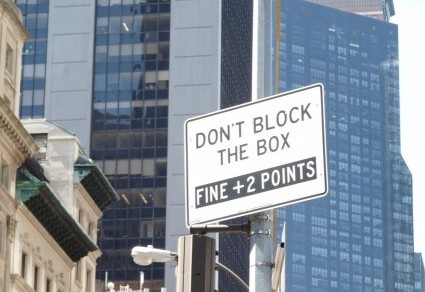Probably not, if you believe television pundits discussing the polarization of viewpoints on pretty much everything. Probably yes, if you ask me. I may be overly optimistic, but I still believe we can find our way back to respectful debate and at least some agreement on important issues.
But I’m not a politician, I’m a grammarian. In that context, my answer to the title question is “probably not.” Why? Take a look at these signs:

I snapped this photo on a bus, where the sign was attached to a curve. Hence the odd angle. In terms of agreement (the grammar rule that says singular pairs with singular and plural with plural), this sign also has an odd angle. The subject of the first sentence is plural (“a lot of funky smells”), but the verb, which is tucked into the contraction “there’s,” short for “there is,” is singular. No agreement there except among noses, which will indeed detect “a lot of funky smells’ with every sniff of New York air. Moving on to the second sentence: The subject and verb are both plural (“WashClubbers” and “are”). So far, so good. But “one”? I’m not sure what “WashClubbers” are, but I am sure they’re not “one.” They’re not grammarians, either. In case you’re curious, “one” is the subject complement in that sentence.
As they say on late-night TV, “Wait! There’s more!” 
I won’t go into the fact that the manufacturer thought customers needed to be told that “shower caps” are for people who want to keep their hair dry. (Okay, I’ll go into it a little: What else would you use a shower cap for? Fashion? Have you ever looked in the mirror when you’ve got one on your head?) My focus is on the plural subject, “shower caps,” and the singular verb, “keeps.” Nope. Disagreement felony.
I’m not going to end with the platitudinous “let’s agree to disagree.” Instead, a call to arms: Let’s agree to agree, at least in grammar.



